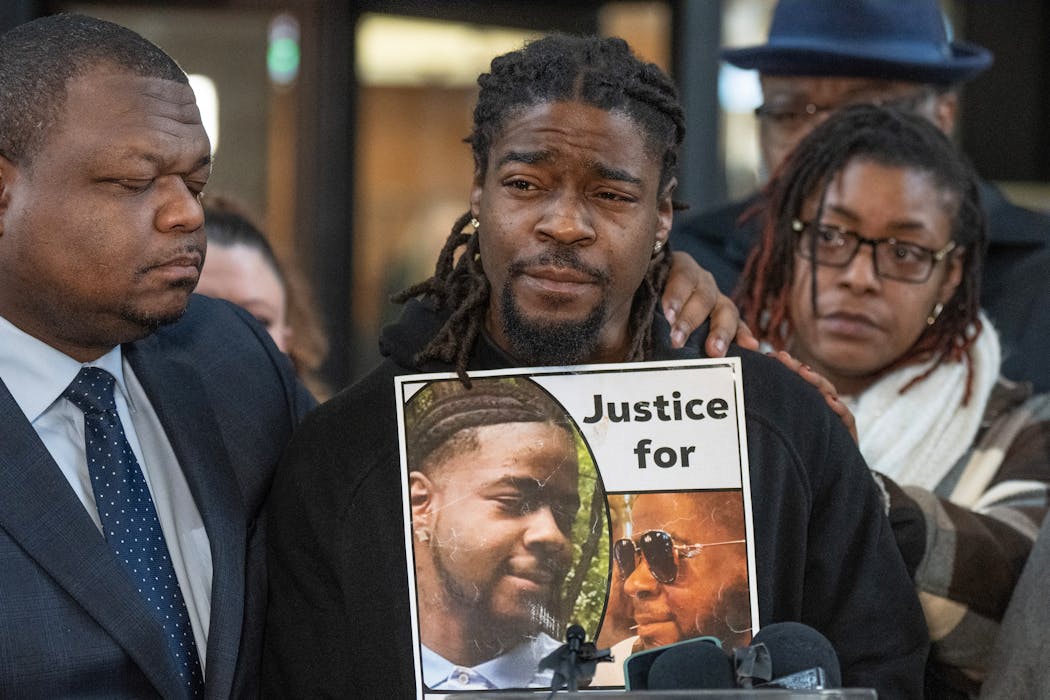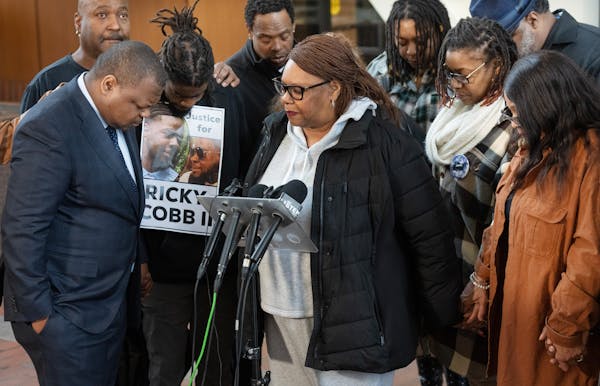Hennepin County Attorney Mary Moriarty said she won't use grand juries to make charging decisions in cases where law enforcement uses force resulting in the injury or death of civilians, rather than making the call herself — a practice her predecessor Mike Freeman also adopted late in his tenure.
But she did convene a grand jury after the shooting of motorist Ricky Cobb II by Minnesota State trooper Ryan Londregan last summer to gather evidence to help inform that decision.
When she announced the charges against Londregan Wednesday — second-degree murder, second-degree manslaughter and first-degree assault — there was no mention of a grand jury. However, the office's use of one was decried in court filings from Londregan's attorney, Chris Madel.
Madel wrote in the filings that Moriarty abused the grand jury process "as a substitute for discovery," or fact-finding, and the case should be dismissed or her office should be disqualified from handling it. He argues in the filing that Moriarty "decided to end-run the grand jury in order to manufacture charges."
But what Moriarty did mirrors how Freeman relied on the process in 2018 when handling the fatal shooting of Justine Ruszczyk Damond by Minneapolis police officer Mohamed Noor. He convened a grand jury, but jurors didn't indict the officer. Freeman made the charging decision, like Moriarty did with Londregan.
David Schultz, a political science professor at Hamline University, said the law doesn't preclude Moriarty from using a grand jury this way. Prominent Twin Cities defense attorney Joe Tamburino echoed Schultz, saying Moriarty's use of "the grand jury is a non-issue."
Londregan, 27, who has less than two years of law enforcement experience, shot Cobb, 33, about 2:15 a.m. July 31 during a traffic stop on Interstate 94 in north Minneapolis for driving without taillights. Troopers had tried placing Cobb under arrest for violating a domestic order for protection. As the car started moving, dragging another trooper, Londregan shot Cobb.
Although common in federal court, the use of grand juries in Minnesota state court is rare and only seen when stakes are high, like police killings or when prosecutors are seeking a life sentence. Most often it's to indict a defendant on first-degree murder, which only a grand jury can do.
State law describes the secret nature of grand juries, how many jurors serve (between 16 and 23) and for how long (no longer than a year or until "it has completed an investigation.")
In Londregan's case, Moriarty said that when the BCA handed over its investigation in September she learned of State Patrol employees refusing to cooperate with the BCA's probe.
"These are individuals who are not the subject of the investigation but may have relevant information," she said at the time. "I am committed to ensuring that our office utilizes all resources available to us to conduct a complete and thorough review, and reaches a decision as quickly as possible."
Madel's court filings say that other troopers at the scene of the deadly traffic stop were subpoenaed to testify, including troopers Brett Seide and Garrett Erickson. But the two troopers also provided written statements to the BCA during its investigation, according to the filing.
A grand jury can compel a law enforcement officer to testify, unless they are a suspect or witness invoking their Fifth Amendment right.
What is known as the "blue wall of silence," a term for how law enforcement officers protect their own from incriminating information, was also a factor in Freeman's decision to rely on a grand jury in Damond's 2017 killing.
Damond, 40, was gunned down in a southwest Minneapolis alleyway after calling 911 to report a suspected sexual assault. One of the responding officers, Mohamed Noor, was in the passenger seat and shot across his partner in the driver's seat, striking and killing her as she approached the squad vehicle. An attorney for her family said police were uncooperative with the BCA investigation.
Freeman convened a grand jury in 2018 to gather more evidence while still retaining charging authority. He charged Noor with third-degree murder and second-degree manslaughter.
Noor became the first former Minnesota police officer convicted of an on-duty homicide. He has since been released from prison.
In a recent interview, former Ramsey County Attorney Susan Gaertner, who now practices privately, said cases of law enforcement shootings often went to a grand jury — that is until the advent of officer body-worn camera footage.
"It is a very dramatic improvement in the ability to review exactly what happened," Gaertner said.
County attorneys are now more likely to review the evidence themselves, she said, and issue charges.
Moriarty declined interview requests for this story. But in an explanatory video released two weeks before the Londregan charging decision, she explained her intention to not rely on grand juries.
In the video, she said grand juries are controlled by prosecutors because for much of the proceedings, there isn't a judge in the courtroom. There's no defense attorney.
"The problem with it now is that it's entirely secret," she said, and prosecutors should take ownership and accountability of the charges issued.
"And that is the reason why we will not be using a grand jury for charging purposes in cases that involve officers in the death of one of our community members."
Star Tribune staff writer Tim Harlow contributed to this story.

Randolph calls reasons for losing STA hockey job 'lame excuses'

Mankato area schedules new siren test Friday after malfunction
St. Cloud State president leaves abruptly; cuts expected in weeks ahead

University of Minnesota strengthens case to treat COVID-19 with metformin, not ivermectin



